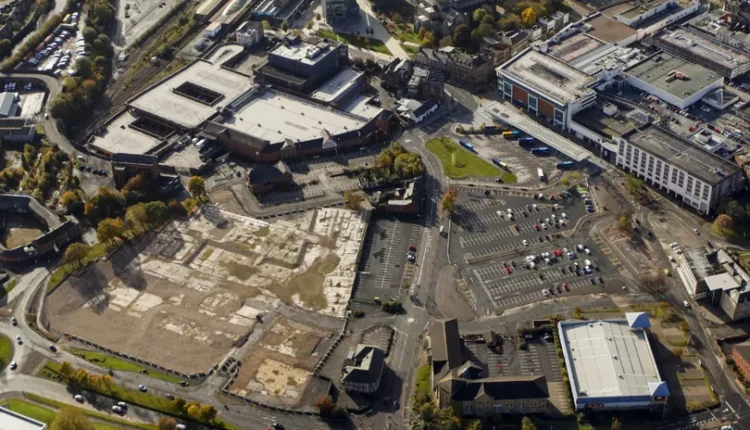Why iconic Blackburn landmark leaves locals feeling bitter about city status snubs.
Blackburn residents have long maintained that their town deserved to be promoted to a city. Preston was granted city status in 2002 as part of the Queen’s Golden Jubilee celebrations to commemorate 50 years on the throne.
Fellow Lancastrians in Blackburn felt deceived that a town without a cathedral, which was long considered a’must’ in determining city status, was upgraded after its own bid was denied.
At the time, citizens in Blackburn once again underlined the fact that Blackburn missed out to Preston 20 years earlier, despite its Central Lancashire rival not possessing a cathedral.
While there is a historical connection, thanks to Henry VIII’s establishment of cathedral cities in the 1540s, modern city status is awarded by royal charter and does not require communities to have a cathedral. Many cities today, including Birmingham, were created without cathedrals, and even those having cathedrals, such as Blackburn, do not have city status.

In 2022, the town was again denied city status, with Bangor in Northern Ireland, Colchester, Doncaster, Milton Keynes, Dunfermline in Scotland, Wrexham in Wales, and Stanley, the capital of the Falkland Islands, receiving the distinction.
Simon Bell (below) told LancsLive in 2022: “It’s a shame because we have a cathedral, and it’s a great cathedral area.
Blackburn is almost the same size as Preston, although it is significantly better. It would have been nice to be on the map as a city.”

Blackburn Cathedral is relatively new in terms of construction. While the site has been home to a church for more than a thousand years, and the first stone church was built there in Norman times, the structure only became a cathedral in 1926. The cathedral was once the parish church of St Mary the Virgin, constructed by John Palmer and consecrated in 1826, and is built on foundations estimated to date back to 596.
That claim was made in 1347 by John Lindley, 5th Abbot of Whalley, in his treatise “De Statu Blagborneshire”. His reference is unclear, and his chronology is known to be less than exact, but there is evidence that Romano-British Christianity existed in the district after the Romans left at the beginning of the 5th Century.
According to Blackburn Cathedral’s website, it is not unreasonable to believe that Abbot Lindley was correct and that a church existed in Blackburn prior to the advent of the Augustinian mission in Kent in 597.
History
The Domesday Book, produced in 1086, contains the oldest documentary evidence of Blackburn. It is reported that the Blackburn Hundred was assessed for geld (Danegeld) for two hides and two carucates of land.
This demonstrates that the church was established during the reign of Ethelred the Unready. The Saxon records mention Blackburn as a village whose people battled valiantly against Danish invaders.
The chronicles also claim that during the reign of King Edward the Confessor (1042-1066), the church was already dedicated to St Mary and known as the ‘Inn of the Lord’.

The Domesday Book records that Edward the Confessor possessed Blackburn, and William the Conqueror (1066-1087) claimed it by right of conquest.
The patronage passed to the de Lacey family, who transferred it in the 12th century to the Cistercian Abbey of Stanlaw in Cheshire.
In 1283, the monks persuaded Henry de Lacey, Earl of Lincoln and Lord of Pontefract and Clitheroe, to give them the important Rectory of Whalley in Lancashire, where they settled.
Earl Henry directed that the remains of his forebears and those buried in Stanlaw be interred at ‘The Blessed House in Whalley’, which was done.
Whalley appears to have been reliant on Blackburn, but when the latter advanced, the status was reversed, and St Mary’s became submissive to the monastery. Eight C15th misericords that remained from Whalley Abbey were put in Blackburn Cathedral.
It is thought that at this time, a Norman church stood on the Saxon site. When the foundations of John Palmer’s church were being dug around 1820, they discovered blocks of stone etched with Norman designs and carved capitals.
The church’s architectural history dates back to the fourteenth century, when it was restored in the ornamented style under King Edward III’s reign.
A fragment of mediaeval glass from this church is preserved in a window in the Cathedral’s South Transept.

Civil War
Cromwell’s forces despoiled the church during the Battle of Preston in the Civil War.
The Cathedral’s most revered relic is the 15th-century Pax, a little gilded tablet etched with the Madonna standing on a crescent moon cradling the newborn Jesus, which was kissed by the priest and congregation during the Mass’s peace.
The majority of these were demolished during the Reformation, and only eight are known to exist in England today.
The Blackburn Pax was hidden in a gravestone in the churchyard and discovered in 1820 while the stone was being lifted to make space for the new church.
By 1818, the existing church was in disrepair, so it was decided to construct an entirely new structure.
John Palmer was asked to construct the new church. It was still a Georgian church, but it was a pioneer of the gothic revival, of which St Mary’s was undoubtedly an early example.
This edifice, which serves as the Cathedral’s Nave, was ornamented as we see it now as part of the late 1960s ‘finishing scheme’ by Architect Laurence King and rededicated in 1965 in the presence of HRH Princess Margaret.
Read more on Straightwinfortoday.com


Comments are closed, but trackbacks and pingbacks are open.